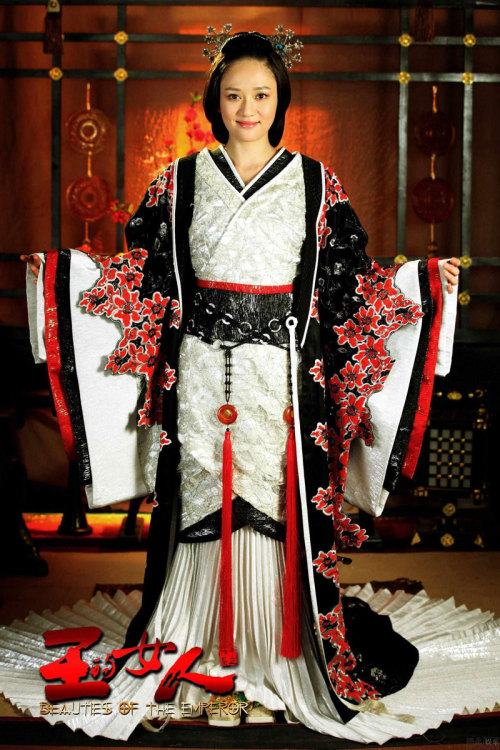NO.
The point of today's post is about cultural diversity in traditional clothing. In Asia. Meaning mostly China, Japan and Korea. These three get mixed up all the time. What made me write this post is the fact that I'm actually rather tired of hearing "chinese" when in full kimono. And while explaining, get the comment of "Well, it's Asian so I wasn't that far off!". No, you were just a whole culture off.
China
First let's look at China, since the the kimono of Japan and the hanbok of Korea both shaped themselves from it.
Hanfu
Hanfu, like the kimono, has many varieties and formalities. There are probably people more knowledgable than me on this, and even a small google search will give you quite a lot of answers. It is said that hanfu's history might go back even as far as three millenias.
The hanfu also has three layers of formality: Informal, semi-formal and formal. A typical hanfu outfit is two to three layers, but during formalities, there can be more layers.
There are two types of formal wear, shenyi. The top one is for men and the bottom one is for women. You can easilly spot the differences in the sleeves and how the hem is shaped. The female version is a lot more of the "wrap-around" kind than the men's. The women's shenyi portrayed in this picture is called a guju and the men's shenyi a zhiju.
This is a type of informal wear for women, a ruqun. You can clearly spot the similarities of the garment to the Korean hanbok.
Cheongsam / Qípáo
Most people I've met associate the cheongsam as the traditional garment of China, even if the garment was created in 1920s in Shanghai for upperclass ladies and sociaties.
Nowadays it's still widely in use as uniforms and workclothes. Some airline hostess' uniform is a cheongsam. The garment in itself bears a striking resemblance to the traditional vietnamese áo dài:
| Áo dài |
Korea
Hanbok / Chosŏn-ot
Korean traditional dress is typically a short vest/jacket and a long skirt. There are two different names for the same garment as the hanbok is used in the South and Chosŏn-ot is used in the North. Hanbok was born during the Chosŏn dynasty. The high officials and the aristocracy changed their styles according to foreign styles, but the commonwealth kept using the garment we today know as the hanbok. It's used in semi-formal and formal occasions nowadays.
You can see how much the style resembles the informal chinese ruqun dress, with the jacket and the skirt.
Japan
Kimono
Japan probably has the most known (appart from the cheongsam) traditional dress of these three, the kimono. In western speech a wrap-around clothing is instantly named a "kimono". A kimono is T-shaped garment that one wraps around to dress and ties it with a wide belt called obi. Female kimono is a lot longer than the men's and it varies in styles and formalities. Kimono comes with three formalities, just like the hanfu: Informal, semi-formal and formal.
For more information on kimono, you can go to my post on types of Kimono
I could go on an on, about the Asian traditional dresses but let's stop for now. The hanfu, section became longer than I wanted, but there was just so much information... I hope I made it clear about which dress goes to which culture. Thank you and have a nice summer day!










